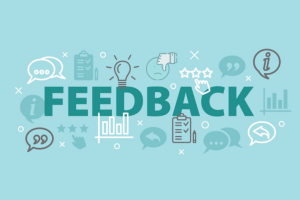
The Importance of Customer Feedback
Customer feedback is a valuable source of information that provides businesses with actionable insights. It helps companies understand how customers perceive their products, services, and overall brand experience. By listening to customer feedback, companies can identify areas for improvement, enhance customer satisfaction, and build long-lasting customer relationships.
Leveraging Customer Feedback for Business Growth
Collecting customer feedback is only the first step. To truly leverage customer feedback for business growth, you need to analyze the data and take action. Here are three key ways to leverage customer feedback:
Identifying Patterns and Trends
Analyze customer feedback data to identify patterns, trends, and recurring themes. Look for common pain points, areas of delight, and emerging customer needs. By identifying patterns, you can prioritize areas for improvement and align your business strategies with customer expectations.
Making Data-Driven Decisions
Use customer feedback data to make data-driven decisions across your organization. Incorporate customer insights into product development, marketing campaigns, and customer support initiatives. By basing decisions on customer feedback, you can enhance customer satisfaction and drive business growth.
Improving Customer Experience
Customer feedback is a powerful tool for improving the overall customer experience. Identify pain points and areas of friction in the customer journey and take steps to address them. Continuously monitor customer feedback and iterate on your products, services, and processes to deliver an exceptional customer experience.
Advertise On an App Like AMP’d Rewards To Get Much Needed Customer Feedback
Advertisers Can…
- Post ads.
- Assign rewards values.
- Get valuable feedback on posted ads.
- Give back to their new customers.
You can put the data the app collects to work for your company and create loyal customers while you do it.
> Learn More
Focus Groups
Focus groups bring together a small group of customers to participate in a guided discussion facilitated by a moderator. This method allows for interactive and dynamic conversations that can generate rich insights. Here are the key steps to conducting effective focus groups:
Planning and Recruitment
Identify the objectives of the focus group and create a recruitment plan to ensure a diverse group of participants. Consider factors such as demographics, product usage, and customer segments. Develop a discussion guide that outlines the topics and questions to be covered during the focus group.
Facilitating a Productive Discussion
During the focus group, the moderator should create a comfortable and open environment for participants to share their opinions and experiences. Encourage active participation and facilitate the discussion to ensure all relevant topics are covered. Take notes and record the session for later analysis.
Analyzing Focus Group Data
After the focus group, transcribe and analyze the discussion to identify key themes and insights. Look for patterns in participants’ responses and identify areas of consensus or divergence. The findings from focus groups can provide valuable qualitative data that complements quantitative research methods.
Feedback Collection Tools and Software
Feedback collection tools and software can streamline the process of gathering and analyzing customer feedback. These tools offer various features, such as survey creation, data analysis, and feedback management. When choosing a feedback collection tool, consider the following factors:
Choosing the Right Tool for Your Business
Evaluate different feedback collection tools based on your specific requirements. Consider factors such as survey customization options, data visualization capabilities, integration with other systems, and pricing. Choose a tool that aligns with your budget, technical capabilities, and long-term goals.
Integrating Feedback Collection into Your Processes
Integrate feedback collection into your existing customer touchpoints, such as your website, email communications, and customer support channels. Embed feedback forms or surveys at relevant touchpoints to gather insights from customers at different stages of their journey. Automate feedback collection processes to save time and ensure consistency.
Analyzing and Acting on Feedback Data
Feedback collection tools often provide data analysis features to help you make sense of the feedback you collect. Take advantage of these features to identify trends, patterns, and areas for improvement. Use the insights gained from feedback data to inform decision-making, prioritize initiatives, and drive continuous improvement.
Customer Feedback Surveys
Customer feedback surveys are a popular and effective method of collecting feedback. Surveys can be conducted through various channels, including email, website pop-ups, and social media. There are two main types of customer feedback surveys: short slider surveys and traditional surveys.
Short Slider Surveys
Short slider surveys are compact and visually appealing surveys that prompt customers to rate their experience on a sliding scale. These surveys are quick to complete and can be embedded on your website or sent via email. Short slider surveys are ideal for collecting feedback on specific aspects of your products or services, such as ease of use or customer satisfaction.
Traditional Surveys
Traditional surveys involve a series of questions that customers can answer in detail. These surveys provide more in-depth insights and allow customers to express their opinions and suggestions. Traditional surveys can be conducted online or offline, and the questions can be customized based on your business objectives. It is important to keep the survey concise and easy to understand to encourage higher response rates.
Email and Customer Contact Forms
Email and customer contact forms provide an opportunity to gather feedback during customer interactions. By incorporating feedback requests into your email communications and contact forms, you can collect valuable insights without disrupting the customer experience. Here are some best practices for collecting feedback through email and customer contact forms:
Setting Clear Expectations
When requesting feedback via email, it is important to set clear expectations regarding response times and follow-up actions. Let customers know when they can expect to hear back from you and assure them that their feedback will be taken into consideration. Clear expectations can encourage customers to provide honest and detailed feedback.
Organizing Email Feedback
Managing email feedback can be challenging, especially as the volume of customer emails grows. To ensure that no valuable insights are overlooked, consider using a project management tool or customer support software to organize and categorize email feedback. By creating dedicated boards or cards for customer feedback, you can easily track and prioritize actionable insights.
Sending Personalized Responses
When customers take the time to provide feedback via email, it is important to acknowledge their input and respond promptly. Personalized responses demonstrate that you value customer feedback and are committed to addressing their concerns. Consider including a feedback-specific email address to streamline the process and ensure that all feedback is properly tracked and addressed.
Usability Tests
Usability tests involve observing users as they interact with your product or website to identify areas of improvement. By watching how customers navigate your website or use your product, you can gain valuable insights into their user experience. Here are the key steps to conducting usability tests effectively:
Planning and Execution
Before conducting a usability test, define clear objectives and create a test plan. Identify the specific tasks you want users to perform and the metrics you will use to evaluate their performance. During the test, observe users as they complete the tasks, take notes, and ask follow-up questions to gather additional insights.
Participant Recruitment
Recruit a diverse group of participants who represent your target audience. Consider factors such as age, gender, and level of familiarity with your product or industry. Ensure that participants feel comfortable and provide informed consent before starting the test.
Analyzing Usability Test Results
After completing the usability tests, analyze the data to identify common pain points and areas for improvement. Look for patterns in user behavior, such as frequent errors or confusion. Use the insights gained from the usability tests to inform design changes and enhance the user experience.
Social Media Listening
Social media platforms offer a wealth of customer feedback and insights. By actively monitoring brand mentions and customer conversations on social media, businesses can gain real-time feedback and identify emerging trends. Here are three key strategies for effective social media listening:
Monitoring Brand Mentions
Monitor social media platforms for mentions of your brand, products, or industry keywords. Use social listening tools to track these mentions and gain insights into customer sentiment and perceptions. By monitoring brand mentions, you can identify opportunities for engagement and address customer concerns promptly.
Analyzing Customer Sentiment
Analyze customer sentiment by examining the tone and context of social media conversations. Look for patterns in positive and negative sentiment to identify areas of strength and improvement. Sentiment analysis tools can automate this process by categorizing social media posts into positive, neutral, or negative sentiment.
Engaging with Customers
Engage with customers on social media by responding to their comments, questions, and concerns. Promptly address customer issues and provide helpful information or solutions. Engaging with customers on social media not only demonstrates your commitment to customer satisfaction but also helps build brand loyalty and trust.
Online Reviews and Ratings
Online reviews and ratings provide a wealth of customer feedback and play a significant role in shaping customer perceptions. Monitoring review platforms and actively managing online reviews can help businesses gather feedback and enhance their online reputation. Here are three key strategies for leveraging online reviews and ratings:
Monitoring Review Platforms
Monitor popular review platforms relevant to your industry, such as Yelp, Google My Business, or industry-specific review sites. Set up alerts to receive notifications whenever new reviews are posted. Regularly check these platforms to gain insights into customer experiences and identify areas for improvement.
Responding to Reviews
Respond to both positive and negative reviews to show that you value customer feedback. Thank customers for positive reviews and address any concerns or issues raised in negative reviews. Responding to reviews demonstrates your commitment to customer satisfaction and can help mitigate the impact of negative feedback.
Leveraging Positive Reviews
Leverage positive reviews by featuring them on your website, social media, or other marketing materials. Highlighting positive feedback can help build trust with potential customers and strengthen your brand reputation. Consider reaching out to customers who leave positive reviews to request their permission to use their feedback as testimonials.
Customer Interviews
Customer interviews provide an opportunity to have in-depth conversations with your customers and gain valuable insights into their needs, preferences, and pain points. By conducting structured or semi-structured interviews, you can gather qualitative data and uncover hidden insights. Here are three types of customer interviews to consider:
Structured Interviews
Structured interviews involve a predetermined set of questions that are asked in the same order to each participant. These interviews allow for standardized data collection and facilitate easy comparison across participants. Structured interviews are particularly useful when seeking specific information or comparing responses.
Semi-Structured Interviews
Semi-structured interviews provide a framework of topics and questions but allow for flexibility and exploration of new ideas. These interviews encourage participants to share their experiences, opinions, and suggestions openly. Semi-structured interviews can uncover unexpected insights and provide a deeper understanding of customer perspectives.
In-person and Remote Interviews
In-person interviews allow for face-to-face interactions and non-verbal cues, which can enhance the depth of the conversation. However, in-person interviews may be logistically challenging and time-consuming. Remote interviews conducted via video conferencing or phone calls offer convenience and flexibility for both parties.
Customer Advisory Boards
Customer advisory boards consist of a select group of customers who provide feedback, insights, and strategic guidance to a company. These boards can be an effective way to engage with loyal customers and gain valuable input. Here are three key considerations when establishing a customer advisory board:
Selecting Advisory Board Members
Choose board members who represent a diverse range of customer segments, demographics, and product usage. Look for individuals who are passionate about your brand, have a deep understanding of your products or services, and are willing to provide candid feedback. Consider inviting both long-time customers and newer customers to gain different perspectives.
Engaging Advisory Board Members
Engage advisory board members in meaningful discussions and activities. Provide regular updates on company initiatives, share product roadmaps, and seek their input on key decisions. Encourage board members to provide feedback, suggestions, and recommendations based on their experiences and expertise.
Utilizing Advisory Board Insights
Leverage the insights and feedback from the advisory board to inform your business strategy, product development, and marketing initiatives. Consider integrating advisory board members into beta testing programs, focus groups, or user research activities. Show appreciation for their contributions and keep them informed of the impact their feedback has on your business.
Website and App Analytics
Website and app analytics provide valuable data on user behavior, preferences, and engagement. By tracking user interactions and analyzing data, you can gain insights into how customers navigate your website or app. Here are three key insights that website and app analytics can provide:
Tracking User Behavior
Website and app analytics tools, such as Google Analytics, can track user behavior, including page views, click-through rates, and conversion rates. By analyzing user behavior, you can identify popular pages, assess user engagement, and optimize your website or app accordingly.
Analyzing Conversion Funnels
Conversion funnels track the steps users take before completing a desired action, such as making a purchase or filling out a contact form. By analyzing conversion funnels, you can identify bottlenecks, drop-off points, and areas for improvement. Optimizing conversion funnels can lead to increased conversions and improved user experience.
Identifying Areas for Improvement
Website and app analytics provide data on user engagement, bounce rates, and exit pages. By identifying pages with high bounce rates or high exit rates, you can pinpoint areas of your website or app that may need improvement. Use this data to optimize user flows, enhance page performance, and improve overall user experience.
Customer feedback is a valuable resource that can shape the future of your business. By implementing the best ways to collect customer feedback, you can gather insights, improve customer satisfaction, and drive business growth. From surveys to usability tests, social media listening to customer interviews, each method offers unique benefits and can provide valuable insights into your customers’ needs and preferences. By leveraging customer feedback effectively, you can build strong customer relationships, enhance your products and services, and stay ahead of the competition. Start collecting customer feedback today and unlock the potential for business success.
—
 Earn Rewards With ViewMyAds
Earn Rewards With ViewMyAds
A new and innovative app that rewards you for watching ads!
- Watch selected ads
- Rate and review what you watch
- Get rewarded for your time and opinion
Advertise with ViewMyAds
You can put the data we collect to provide valuable feedback for your company.
> Learn More
—

 Earn Rewards With ViewMyAds
Earn Rewards With ViewMyAds